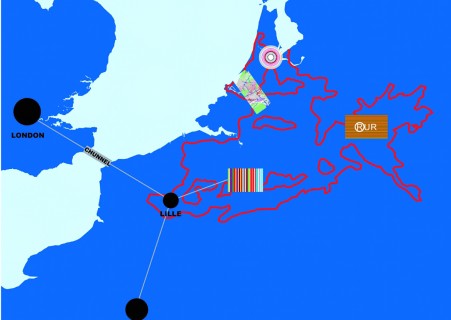The historical area of Holland is a remarkable system of centuries old waterways, polders, landscapes and urban centres formed entirely by man. The towns of Holland have grown into one another, and now, joined together, form a ring. These centres, still managed independently of one another are home to functions which in most countries are housed in a single central metropolis, namely central government, trade, finance, industry and the ports. This city ring, the Randstad, has two major poles: The North Wing with Amsterdam as its dominating city, is home to trade, finance, culture and the media. The South Wing, with Rotterdam and The Hague has two equal centres in which the national government, trade, ports and industry are based. Whilst the north is continuing to develop from the core city Amsterdam, as a classical concentric metropolis, the south occupies a far less coherent urban area. However, the south offers much potential. The question is how urban architectural intervention and administrative alteration in the economically stumbling South Wing can produce a metropolis that will act as a single unit.
Farewell Randstad
The Randstad is an outdated concept, the towns of Leiden and Gouda are too weak to create a coherent ring. Due to mutual disputes many towns are at risk of loosing their competitive position. To promote the Randstad ring is to promote Amsterdam, the dominant player on the field. Other towns in Randstad will in the future experience more and more difficulty in maintaining their facilities. Amsterdam will become ever stronger but with its high architectural quality, there is little room for alteration in the centre. The old centre is no longer developing in line with the rest of the city. The most important economic activities are increasingly taking place on the outskirts.





 cityup.org 传真电话:010-88585380
cityup.org 传真电话:010-88585380